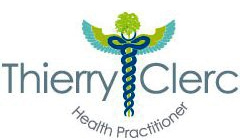Thierry Clerc practices in Cambridge (UK) as a clinical homeopath and a bioresonance therapist. He is a regular contributor of several national and international health magazines.
I use a bioresonance machine with all my customers. This works for me and a lot of people ask me “how does it work?”, while other want to know how it differs from electroacupunture. This short article aims at providing some clarification on these matters.
The history of energetic diagnosis
Like many good things, it started with the Chinese and was perfected by the Germans and the Americans. Every holistic system has to have a diagnostic system. This helps to translate what the customer sees as his or her issue (say “insomnia”) to a set of variables that will be useful for the health practitioner’s point of view. The Chinese perfected the Chinese elements and the meridians. The Indians developped the Chakras and the 3 pillars of Ayurveda. The Ancient Greeks had the four humors, which developped later into the pillars of Western Fold medicine (“earth, wind, water and fire”) and then even more later into iridology, dowsing and kinesiology.
When materialism and the laws of chemisty took its hold on conventional Western medicine, then blood analysis, among other tests, gave this set of analysis to conventional doctors.
You can read more about the history of health here.
What is electroacupuncture?
Electroacupuncture was developped in the 1950s in Germany, under a medical doctor called Dr Voll. He was the first to point out that acupuncture points used on the Chinese meridians had a slightly different electric impedance or electric resistance than the rest of the skin. He created a machine that used micro-currents to test how specific meridian points responded to stimuli. In his view, he was then able to see how a liver or a kidney worked energetically by seeing how the meridians were responding.
One day, at a medical conference, he tested a volunteer and suggested, he had a weak pancreas. Someone in the audience asking him to check the volunteer again while he would hold a specific homeopathic remedy. To his amazement, the test was showing a healthy pancreas. This is how electroacupuncture was created. Electroacupuncturists use a Voll machine to test homeopathic remedies and send back a specific homeopathic vibration to test a support plan. One of the most popular machine is the Vega machine.
What is bioresonance?
While electroacupuncture developped in the 1950s and 1960s, bioresonance came to the fore in the 1980s and is still further developping. Bioresonance originated from Princeton University and the Princeton Engineering Anomalies Research (PEAR) programme, which was funded by NASA and the US government.
The scientists realised that it was not possible to create a purely random generator. Depending on who was around, then the results would see a statistically different outcome. For example, if you throw a dice, you are as likely to get a 1, 2, 3, 4, 5, or 6. It is impossible to define a lucky number. The theories of statistics state that if you throw it 6 million times, or even better 6 billion times, then in such a number, you will get more or less even occurence of each number, minus/plus. PEAR proved that in the real world, this is not the case, the outcome would be different depending on the question, on the subject of the question (“the client”) or the state of the people around. Even a good news in the press or a significant expectation would affect an outcome. If you want to know more about this amazing scientific experience, check “The Field” on my Books’ section.
This is from this theory that bioresonance machine was created. It tests hundreds or thousands of informational inputs on a patient to see, which ones “resonate” the highest, and in my experience, the outcome are often amazing from an informational point of view.
Bioresonance allows you to tests thousands or millions of inputs while electroacupuncture machines tends to check only one input at a time.
However, like with everything, the quality and experience of the health practitioner is more important than the machine, they use, so do not be too put off by their machines, and feel the relationship with the individual.
I hope, you found this article useful.
